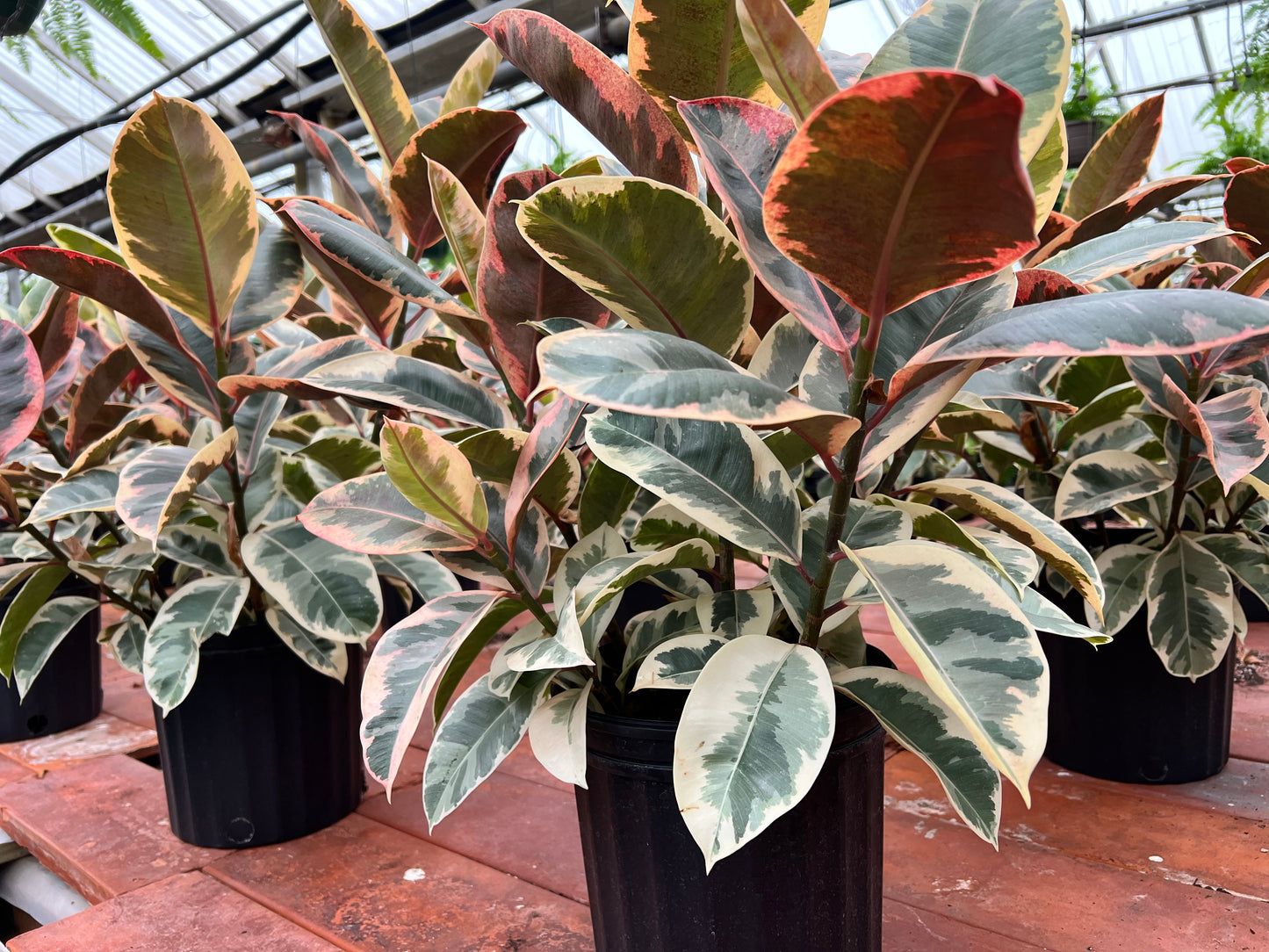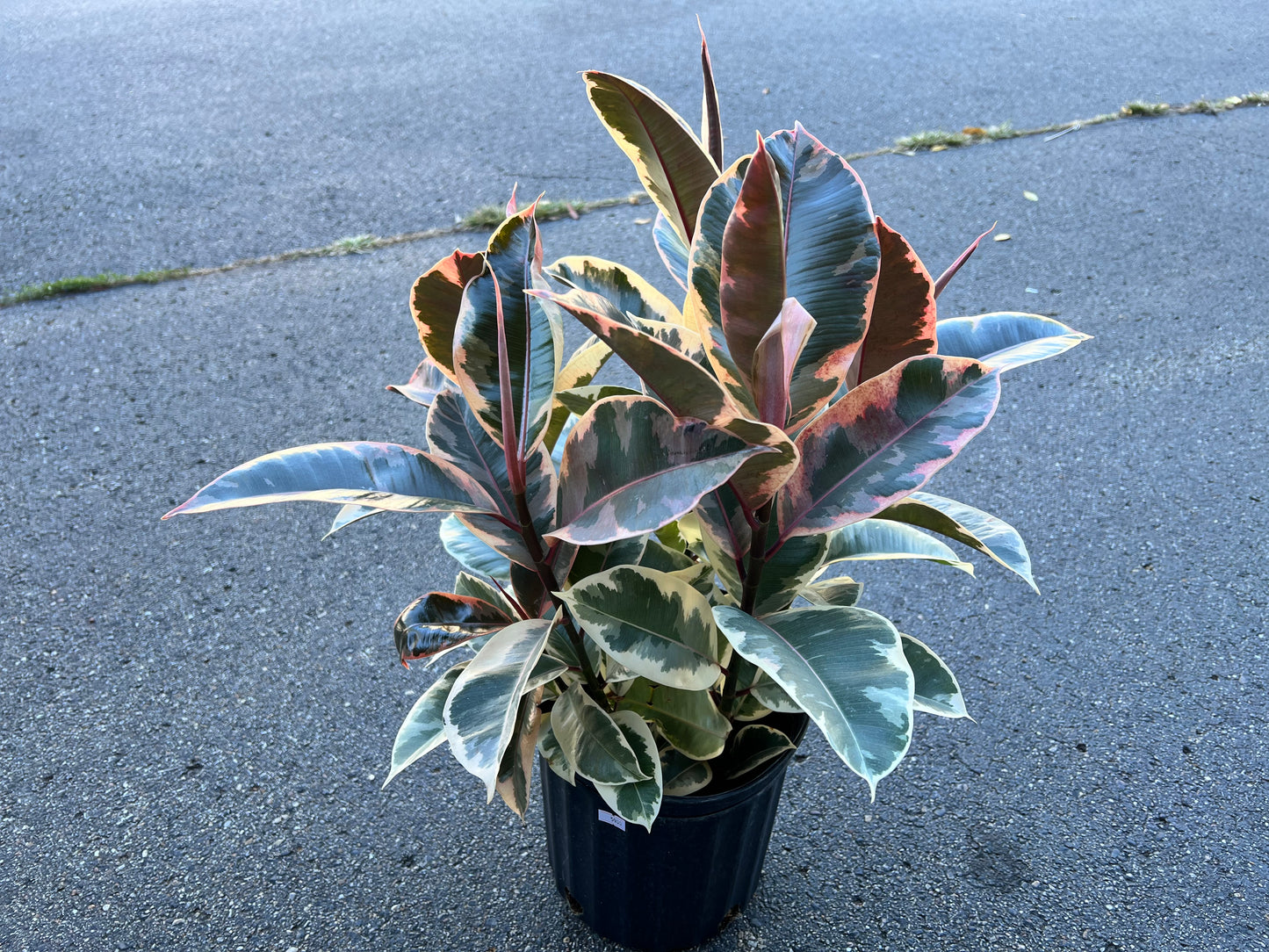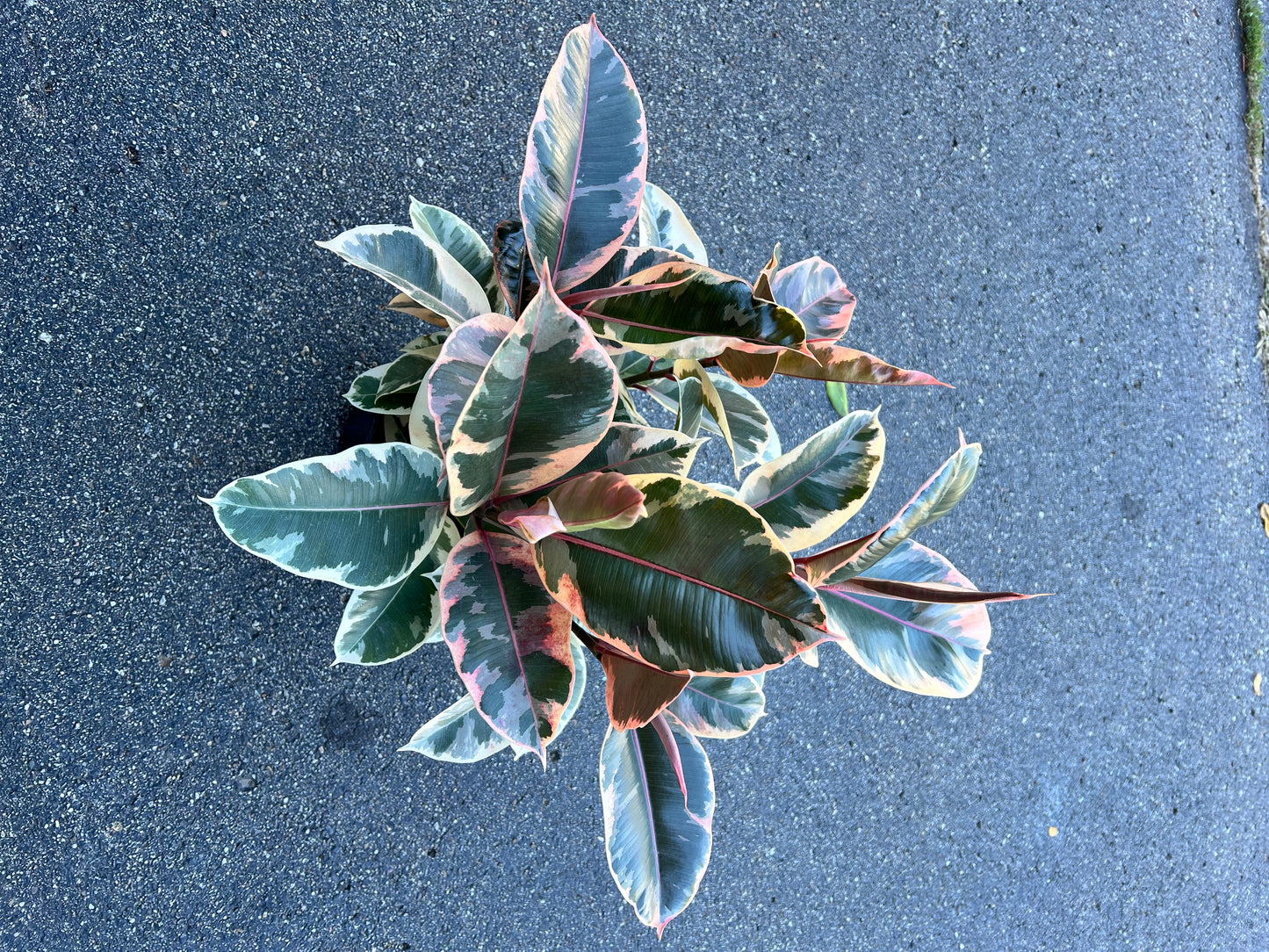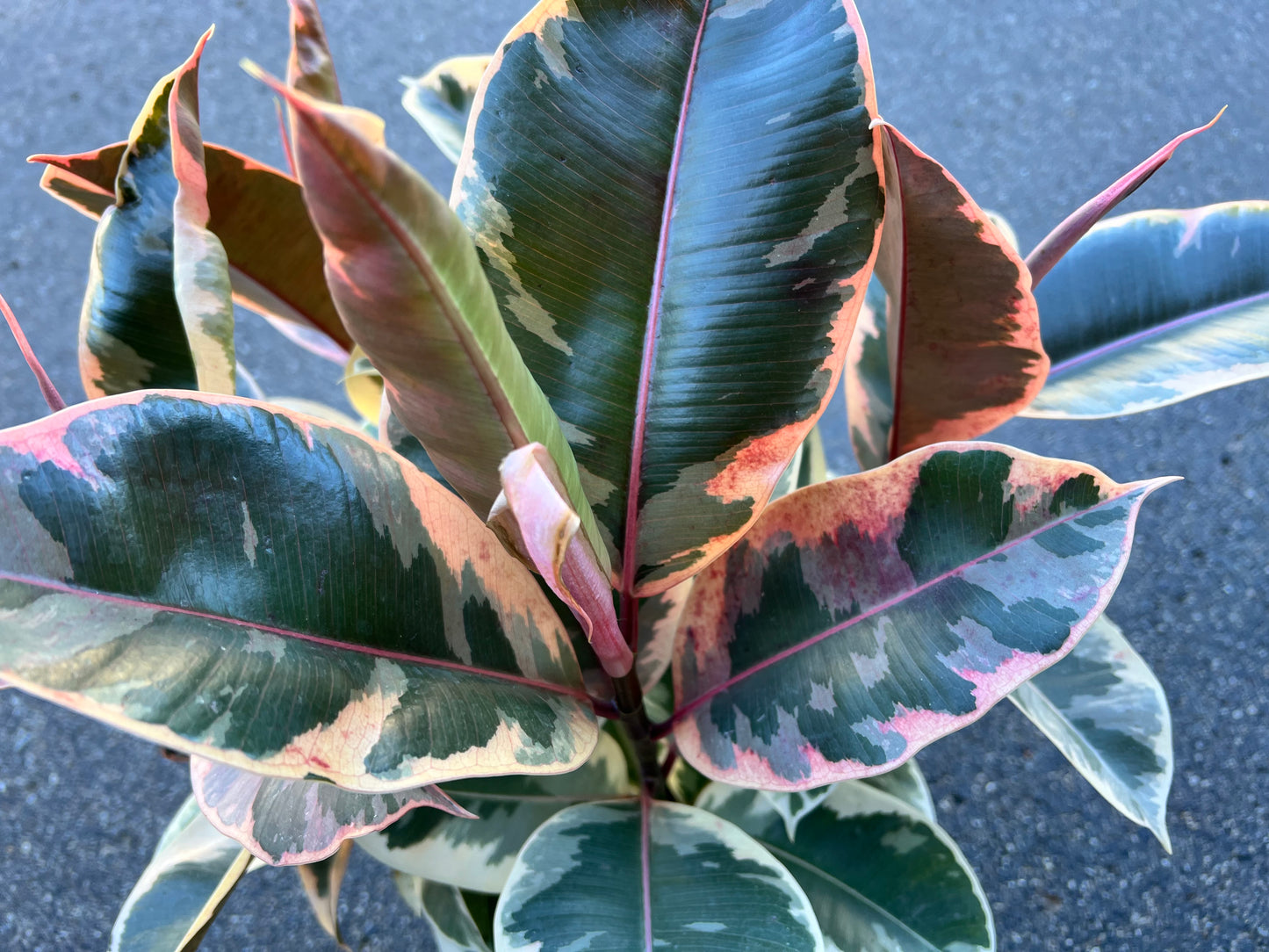The Rooted Plant Shop
Rubber Tree-Tineke 10”
Rubber Tree-Tineke 10”
Couldn't load pickup availability
A rubber tree plant is also known as a Ficus elastica. These large trees can grow up to 50 feet tall. When learning how to care for a rubber tree plant, there are a few key things to remember, but rubber plant care isn’t as difficult as one might think.
Light:
-
Rubber trees thrive in bright, indirect light.
South or East facing light, light over the full plant. Rotating every time you water the tree.
Direct sunlight can scorch their leaves, but too little light can cause them to become leggy and lose leaves.
Watering:
- Water the plant thoroughly when the top 1-2 inches of soil are dry. Be careful not to overwater, as rubber trees don’t like sitting in soggy soil. Make sure the pot has good drainage.
Humidity:
- Rubber trees prefer higher humidity but can tolerate average indoor levels. If your home is very dry, consider misting the leaves occasionally or placing a humidifier nearby.
Temperature:
- Keep your rubber tree in a warm space (65°F to 75°F or 18°C to 24°C). Avoid placing it in cold drafts or near heat sources like radiators.
Soil:
- Use a well-draining potting mix ideally would be bark, cactus soil, and perlite for aeration.
Fertilizing:
- During the growing season (spring and summer), you can feed your rubber tree once a month with a balanced liquid fertilizer. Reduce fertilization in the fall and winter when the plant is dormant.
Pruning:
- Prune rubber trees to control their size or shape. If they get too tall, you can cut back the stem to encourage bushier growth. Always prune just above a leaf node to promote new growth.
Repotting:
- Rubber trees generally need to be repotted every 1-2 years, or when they become root-bound. Choose a pot that’s 1-2 inches larger in diameter than the current one.
Troubleshooting:
- Yellowing leaves: Overwatering or low light.
- Brown leaf tips: Low humidity or underwatering.
- Leaf drop: Sudden environmental changes or overwatering.
With some basic attention, a rubber tree can grow into a beautiful, glossy-leaved indoor plant!
Share
Join Our Loyalty Program
Join our loyalty program, and get rewarded for buying what you love.




Let customers speak for us
from 100 reviewsMel is an awesome plant parent. Her plants are well taken care of and healthy. She has a wide variety to choose from. I will be ordering more of my wish list plants from her in the future.

My plant arrived secured in peanuts, cling wrap at the base, a heat pack in the box also!!! It was cold here in Ohio. It is the perfect bonsai and exact one in the picture. I love it, I’m so happy.

Mel sent the most beautiful Alocasia I have ever seen! Packaged so well and very healthy! Highly recommend!

I ordered the subscription box and was able to pick which plant I wanted for the dollar value of my subscription. Mel helped me find a good plant to help with my air quality in my main living space. She was knowledgeable about the plants’ care and when it arrived the plant did NOT disappoint! It arrived just as gorgeous as it was when I picked it. She shipped it out on Monday and it arrived today, Tuesday. The shipping was crazy fast! The plants were very well packaged with fragile labels on almost every side. There was dirt kicked around in the box, but not as much as I would expect when shipping a pot full of soil. I definitely will recommend 1000 times again! Oh! Also she ships with heat packs! My new babies didn’t have to suffer the cold! ☺️
Had some typical USPS shipping issues and my peperomia arrived missing a few leaves... Mel is amazing and has kept up with me ever since to make sure it recovered! Plant arrived like it was preparing to go to war and has been thriving ever since. Will definitely be ordering again!!
I am super happy with my order and will only buy plants from The Rooted Plant Shop!! My plants are stunning!
The rooted plant shop has been more than amazing! This is my second purchase through the rooted plant shop. Couldn’t be any happier. My first purchase was a boobie cactus and my second is a Verigated Frydek. They included complimentary heat packs so the plant baby’s stayed warm! I would recommend this shop for any needs! The owner is very helpful with questions also!
Love this plant. Shipping was great and plant arrived in perfect condition.

This plant is gorgeous and is beyond what I was expecting. I will keep buying plants here because every one has arrived in perfect shape and packaged with care.

I Ordered three plants and have them delivered. They came in impeccable condition. They’re beautiful and the delivery was so fast highly recommend!!!!











